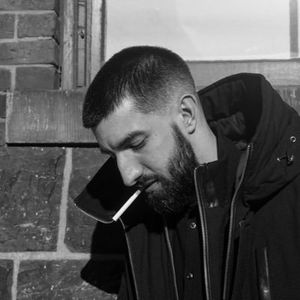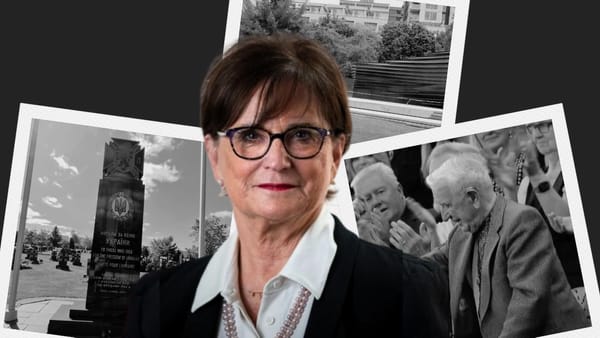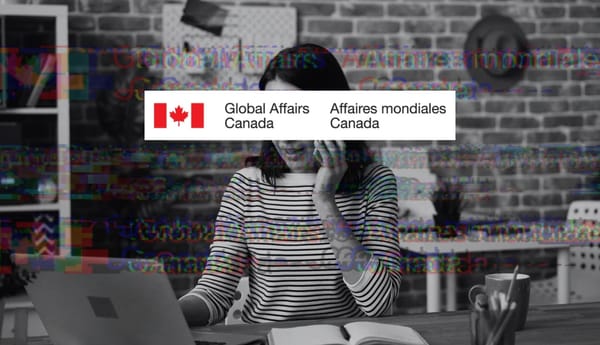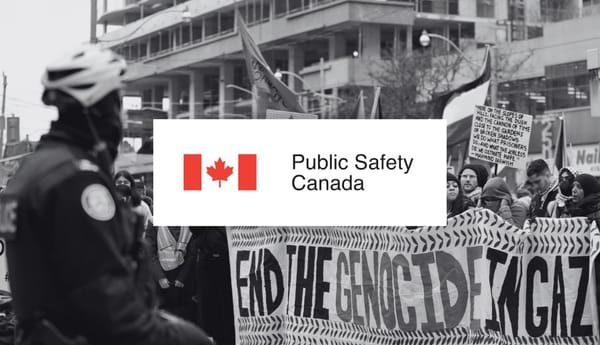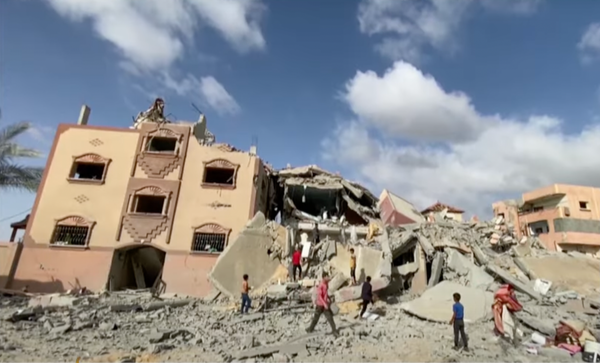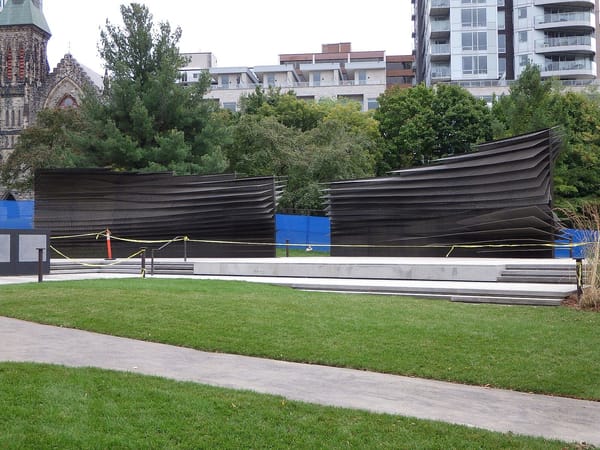Earlier this month, Public Safety Minister Marco Mendicino announced that the federal government has pledged to “prohibit the wilful promotion of antisemitism through condoning, denying or downplaying the Holocaust.” This measure is included in the budget bill, which also contains promises from the government to spend more than $28 million on combatting antisemitism and Holocaust denial.
Since this announcement, there has been some debate in mainstream media as to whether or not the Canadian government, which is following in the footsteps of several European countries, is doing the right thing. The debate hasn’t been about if the Holocaust occurred, but is instead focused on whether banning denial is the best way to preserve an accurate understanding of it, and what threats a ban may pose to free speech.
What this debate has missed, however, is that according to some scholars, Canada is effectively funding Holocaust denial, even as it now seeks to ban it.
Holocaust denial isn’t limited to the false claim that the Holocaust didn’t happen. Instead, as even Mendicino notes, Holocaust denial can also come in the form of downplaying it, or what academics sometimes refer to as “Holocaust minimization” or “Holocaust obfuscation.”
One form of this that has become popular in recent years is the double genocide theory, which Dovid Katz, the independent Yiddish studies and Holocaust scholar, referred to in his 2017 Jewish Currents article as the “primary new mainstream form of Holocaust Denial.” In fact, Katz writes that the “Internet’s revival of [traditional Holocaust denial], disturbing as it is and countered as it must be, is a low-wattage phenomenon compared to the new, truly dangerous and infectious genre of the malady, which was arising just as the old version was losing its last vestiges of currency.”
This theory, which originated in Eastern Europe, holds that there were two genocides of equal severity that took place in Europe during the Second World War: the Holocaust, and a supposed Soviet-led genocide against people in states such as Ukraine, Poland, and the Baltics. Of course, because no such Soviet-led genocide exists (which of course doesn’t mean no crimes were committed), making the comparison requires one to downplay, or minimize, the Holocaust. And this, Katz and other scholars contend, is a form of denying the Holocaust.
Katz notes that, “For decades after World War II, this view was especially pronounced in Western diaspora communities from these countries, especially among those who migrated to the West at the war’s end.” As such, it’s no surprise that, given the mass immigration of right-wing Ukrainians to Canada following the Second World War, this theory has been around the country for a long time. This has manifested in many forms over the years, and one such example is the “Memorial to the Victims of Communism” currently under construction in Ottawa.
In July 2020, I wrote an article focusing in part on how this memorial is an example of the double genocide theory in physical form, arguing that while the forces behind it aren’t Holocaust deniers in the most literal sense, they do promote a form of Holocaust minimization.
I noted that the chair of the board of directors of Tribute to Liberty (TL), the charity behind the monument, told the CBC: “The loudest voices are saying, ‘Perhaps it’s time to treat the signs and symbols of communism in the same way that we treat the swastika and symbols of oppression of the Holocaust.’” This is a clear example of the double genocide theory, as it minimizes the Holocaust to try to draw a comparison between the Soviets and Nazis.
I added, “Yet some go beyond saying the two were equals, and actually say communists were worse than the Nazis. The TL’s website, for example, includes a quote referring to communism as ‘the most colossal case of political carnage in history.’ A summer 2016 TL newsletter, meanwhile, includes a speech from a board member of the international Victims of Communism Memorial Foundation who argues, ‘No political or economic system has claimed as many victims as communism,’ and later complains of people who ‘even equate communism with other systems,’ which sounds like someone upset that not everyone sees communism as worse than fascism.”
It’s not a coincidence, then, that the memorial enjoys support from several governments Katz notes as being responsible for spreading the double genocide theory, as well as trying to erase their country’s role in the Holocaust, including: Hungary, Estonia, Latvia, Poland and Croatia.
They aren’t the only ones. In fact, the Canadian government has had its hands all over the project from its very conception.
The idea for the monument came from a 2007 tour Jason Kenney, then secretary of state for multiculturalism, took to a private park in Toronto, where he came across a monument called “Crucified Again,” which depicts a man being crucified on a hammer and sickle instead of a cross. Kenney thought the monument should be made available to the public, and the next year, TL was founded with the purpose of building a similarly inspired monument in Ottawa.
TL members had many affiliations with the Conservative Party, and in 2009 the National Capital Commission, which describes itself as the “federal Crown corporation dedicated to ensuring that Canada’s Capital is a dynamic and inspiring source of pride for all Canadians, and a legacy for generations to come,” approved the idea. Over the next few years conflicts erupted regarding where exactly the site should be located, as well as the extent of government funding it should receive.
A 2021 CBC article by Taylor C. Noakes notes that, “In 2013, the Harper government pledged $1.5 million to the project, a figure that increased to $3 million by 2014. By the end of 2014, the project’s budget had ballooned to $5.5 million, with a taxpayer contribution of $4.3 million.” As it stands, the National Capital Commission has estimated that the cost of the monument will be about $7.5 million, with $6 million in funding coming from the federal government after Finance Minister Chrystia Freeland included it in the 2021 budget.
As such, we can see that the Canadian government is currently funding a form of Holocaust denial.
The government also directly spreads the form of Holocaust denial encapsulated in the double genocide theory. As I wrote in 2020, “In 2009, the House of Commons unanimously adopted legislation designating August 23 as the ‘National Day of Remembrance for the Victims of Communism and Nazism,’ explicitly equating the two. It has since been annually commemorated by the government.” Again, the only way to equate communism and Nazism is to either deny the Holocaust entirely, or minimize it in order to try to compare it to something done by communists.
So, if Holocaust denial is something the Canadian government is truly concerned about, it should re-evaluate some of the projects it’s funding, and days it is commemorating. As Katz notes, these sorts of projects are likely do more harm to a proper understanding of the Holocaust at this point in history than outright denial, and the fact that the government is behind them makes it more dangerous.
But the reasons why Canada and other states are spreading this form of Holocaust denial is incredibly important as well, as it’s not a simple misunderstanding of the facts, but rather done with a goal in mind. One of these, as Katz notes, is “the rehabilitation of Nazi collaborators as ‘national heroes’ on the grounds that they were anti-Soviet.” (In the case of Freeland’s grandfather, this manifests as either ignoring, whitewashing or excusing his collaboration with the Nazis.)
This has been ongoing, particularly in elements of the Ukrainian diaspora, in Canada for quite a while. For more on that, you can read an August 2020 Passage article by Moss Robeson, titled “Canadian Support For Ukrainian Nazi Collaborators Goes Beyond Statues,” which argues, “Canada is likely the only country in North America, if not the western hemisphere, with monuments dedicated to Waffen-SS veterans. There are also arguably more problematic Ukrainian memorials in Canada that have received little attention in the press.”
And it’s not just a matter of rehabilitating long-dead figures, as this treatment is being given to Nazis that are alive and committing war crimes right now. Modern Russia is certainly not the Soviet Union, but many in the West and parts of Eastern Europe see it as a sort of equivalent. As such, they’ve been willing to support outright Nazis — including with weapons and military training — to fight Russia. And as a result, in recent weeks we’ve started to see all sorts of excuses for these Nazis being made.
In his 2017 article, Katz noted that this was likely to occur, writing, “United States policy regarding the Double Genocide theory began to change markedly around 2009 […] As one American diplomat put it to me some years ago, off the record: ‘Look, these guys will stand up to the Russians, not like England, France and Germany. And if all they want is some changes in the history, and it’s changes that hit Putin in the face, then why the hell not?!’”
Combatting Holocaust denial and Holocaust minimization is a worthy goal. Whether banning it is the best way to do so is up for debate. What the government can and absolutely should do, however, is stop funding and spreading one of its newest and most insidious forms.

